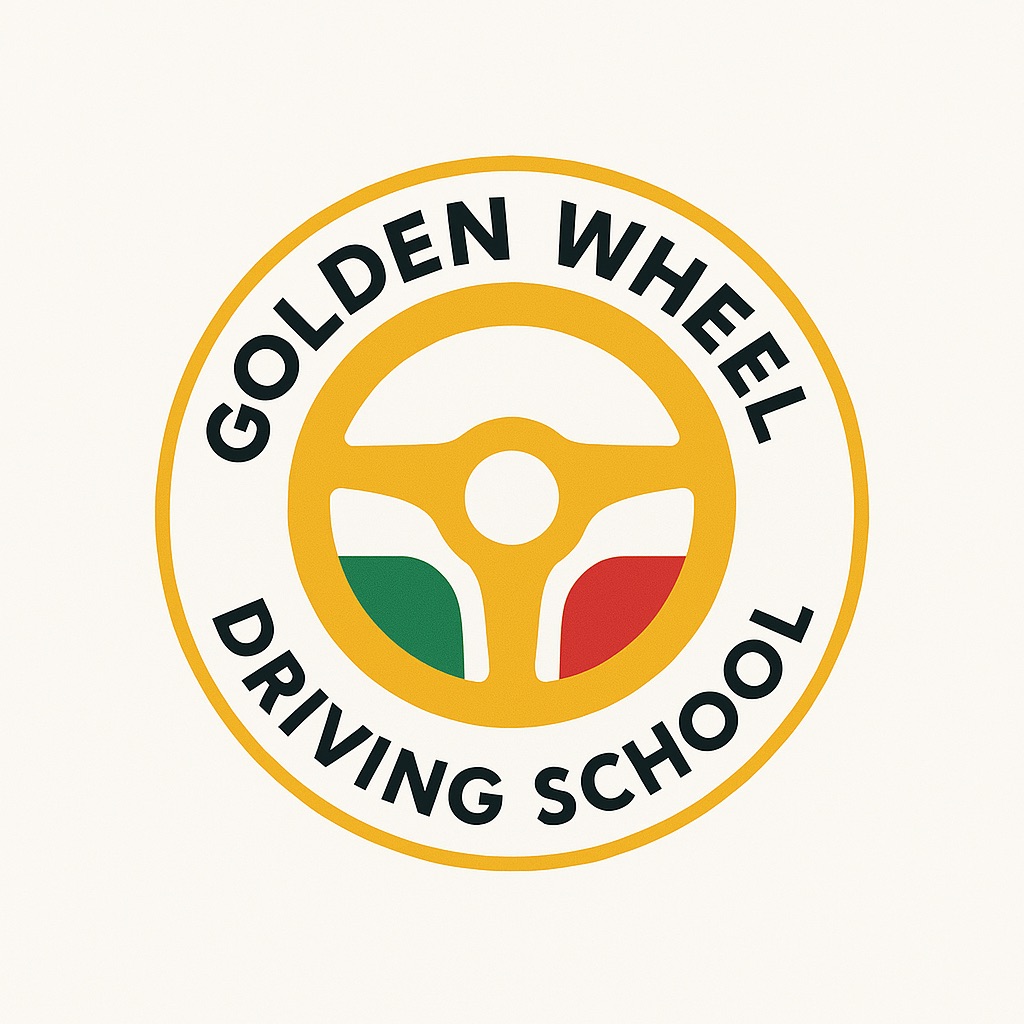Parental strategies for new drivers.Teens learning to drive feel both excited and unsure. Parental support is key in helping them become confident. Studies show teens are three times more likely to crash than older drivers. This makes parental support for teen drivers a critical safety factor.
Parents teach more than just driving skills. They help build judgment, responsibility, and calmness. This is essential for safe driving.

The importance of parental involvement for teen drivers goes beyond road lessons. It’s about building trust, setting clear rules, and showing safe driving habits. This article offers tips for parents to make driving practice a team effort. It focuses on growth, not perfection.
Parental strategies for new drivers. Key Takeaways
- Parental guidance reduces risky driving behaviors by 40% according to the CDC.
- Confidence comes from combining technical skills with emotional readiness.
- Open communication about driving risks strengthens teen decision-making.
- Gradual practice builds both skill and responsibility over time.
- Parents’ own driving habits directly influence their teens’ choices.
Understanding Teen Driver Psychology
Teaching teens to drive is more than just rules. Parents need to understand how teenage brains make decisions and feel emotions. This knowledge helps parents turn challenges into learning opportunities.
The Teenage Brain and Risk Assessment
Teenagers often don’t see dangers clearly because their brains are not fully developed. Studies show they are more likely to take risks than adults. Parents should start practice in safe places like empty parking lots before moving to busy roads.
Common Fears and Anxieties
- Highway merging
- Night driving visibility
- Peer passengers
- Unexpected emergencies
Use teen driver coaching techniques to tackle these fears. For example, practice merging onto highways before driving long distances.
Building Self-Efficacy
| Strategy | Example |
|---|---|
| Positive reinforcement | “You handled that left turn smoothly!” |
| Structured practice | Weekly 15-minute lessons on specific skills |
| Error analysis | Reviewing mistakes without blame to find solutions |
Confidence grows when teens feel they can do things well. Celebrate their small achievements to help them stay safe in the long run.
The Crucial Timeline: When to Start Preparing Your Teen
Supporting your teen driver starts early. Talk about road rules at 12. Use car rides to teach them.
Learning by watching during trips helps them understand before driving. This prepares them for the road.
| Stage | Age Range | Key Activities | Educational Tools |
|---|---|---|---|
| Early Foundation | 12–14 | Talking about traffic signs, discussing risks of distractions | State DMV pamphlets, Behind the Wheel workbook |
| Learner Phase | 15–16 | 100+ supervised hours, night driving practice | Driving simulators like Smash Ultimate, permit practice tests |
| Independence Prep | 16–17 | Emergency braking drills, inclement weather practice | Insurance discounts for completing DriversEd.com courses |
Resources like the Parent Supervised Driving Guide help. They offer checklists for each stage. Start tracking practice hours early to meet state requirements.
- Age 12–13: Discuss “What would you do?” scenarios during traffic stops
- Age 14: Enroll in free DMV webinars about defensive driving
- Age 15: Schedule 30-minute weekly practice sessions
Studies show teens with 3+ years of prep make fewer mistakes. Gradual learning builds confidence without stress.
Creating a Structured Learning Plan
A structured learning plan makes driving lessons clear and easy to follow. It helps build confidence and skill by starting with simple tasks. Then, it adds more complex challenges.
Setting Progressive Skill Milestones
Start with basic skills like parallel parking or handling stop signs. Then, move on to more challenging tasks like driving on highways or at night. Here’s a checklist to help track your progress:
| Skill | Milestone | Example |
|---|---|---|
| Parallel Parking | Completed 5 successful attempts | Use parking lot drills |
| Highway Merging | 30 minutes without assistance | Practice during low-traffic hours |
| Night Driving | Navigate 3 routes at dusk | Start with familiar streets |
Balancing Independence with Supervision
Supporting teen drivers means finding the right balance. Here are some best practices:
- Start with short drives in safe areas
- Gradually increase the distance and complexity
- Use in-car monitoring systems to track progress without micromanaging
Documenting Progress and Celebrating Achievements
Keep a log of each driving session. Celebrate milestones like mastering emergency braking or using turn signals. Also, celebrate staying alert in bad weather.
Give small rewards like extra driving time. This helps reinforce good habits, not just with money.
Essential Parental Support for Teen Drivers
Supporting teen drivers is more than just driving lessons. It’s about making a safe and encouraging space. Here’s how parents can help build good habits and confidence:
Set Rules That Grow with Experience
Begin with clear rules like no passengers at night or limits on driving hours. As they get better, give them more freedom. Here are some examples:
- No phone use while driving
- Curfew times for the first 6 months
- Gradual introduction of highway practice
Feedback That Builds, Not Breaks
Give feedback that starts with something positive, then offers suggestions, and ends with encouragement. For example:
“You handled the left turn smoothly! Next time, check your mirrors earlier. Great job staying calm overall!”
Be the Example They Follow
Teens learn from what they see. Check if you’re setting a good example. Do you speed or use your phone while driving? Show them the right way to do things.
| Your Behavior | Teens Mimic |
|---|---|
| No seatbelt use | 3x higher risk of teen seatbelt neglect (AAA Foundation) |
| Speeding regularly | Teens adopt similar speed tendencies |
Manage Your Stress, Boost Their Confidence
Stay calm during driving practice. If you get stressed, take a break. Try these tips:
- Practice in empty parking lots first
- Use a co-pilot app like DriveCoPilot for real-time guidance
- Share your own early driving mistakes
By following these steps, you play a key role in your teen’s driving development. It turns challenges into learning opportunities.
Teaching Beyond the Basics: Advanced Driving Skills
Teaching teens more than just the basics is key. They need to learn advanced skills for unexpected road situations. Start with defensive driving lessons like keeping a safe distance and checking intersections early. These teen driver coaching techniques help prevent accidents.
- Practice threshold braking in empty parking lots to control speed without locking wheels.
- Simulate skid recovery drills using controlled environments to build muscle memory for emergencies.
- Role-play scenarios like sudden obstacles appearing, stressing quick but calm responses.
Vehicle awareness is also important. Teach teens to check tire pressure weekly and understand warning lights. A quote from the National Safety Council highlights:
“Proactive maintenance reduces 30% of preventable crashes.”
Professional programs like the Driver’s Edge Academy offer advanced courses. These include evasive maneuvers and training for bad weather. Mix hands-on practice with learning about vehicle systems. This makes drivers ready for real-world challenges.
Navigating Different Driving Conditions and Scenarios
Preparing teens for real-world roads means practicing in varied conditions. Here’s how to turn challenges into learning moments with teen driver safety tips that build confidence.

Start with highways. Teach merging by mirroring traffic speed before entering. Use this checklist:
- Stay in the right lane unless passing
- Check mirrors every 5-8 seconds
- Leave a 4-second following distance at 55+ mph
In poor weather, promoting safe teen driving habits starts with visibility prep. For rain: – Wipe both inside/outside windows before pulling out – Turn on headlights (even in daylight drizzle) For snow, practice slow stops in empty parking lots first. Fog? Keep low-beam lights on and reduce speed by 15-20%.
Night driving requires extra focus. Set rules like: – No passengers during first 6 months of night driving – Limit driving after 10 PM until experience grows
Urban areas demand scanning 12-15 seconds ahead for pedestrians and cyclists. Rural roads? Stress scanning for deer and scanning road edges. Use this chart:
| Urban | Rural |
|---|---|
| Slow for sharp turns | Watch for wildlife crossings |
| Check for cyclists at intersections | Reduce speed at unmarked T-junctions |
Progressive practice in these settings turns challenges into skills. Always end sessions with positive feedback on what they handled well.
Technology as Both Helper and Hazard
Technology changes how teens interact with the road. It’s both good and bad. Tools can help with teen driver safety tips but also distract. It’s important to find a balance between new tech and being responsible.
Apps That Support Teen Driver Safety
- Install apps like DriveSmart or CoDriver to monitor speed and set curfew alerts.
- Use platforms like EverDrive for real-time feedback, part of many teen driver education resources.
- Always review privacy settings to protect your teen’s data.
Setting Boundaries Around Device Usage
“94% of teens admit to using phones while driving,” says the CDC—proof that rules are essential. Turn on “Do Not Disturb While Driving” modes on phones. Pair phones with dash mounts to avoid handheld use. Consider hardware blockers like SafeTexting that disable texts when moving.
Vehicle Safety Features Every Parent Should Know
Modern cars have many safety features:
- Automatic Emergency Braking (AEB): Reacts faster than humans in sudden stops.
- Lane Keeping Assist: Alerts if a teen drifts without signals.
- Blind Spot Monitoring: Reduces risks during merges.
Remember: Tech aids but doesn’t replace practice. Teach teens to rely on their skills first, then the tools.
The Driving Contract: Creating Accountability
A written driving contract makes rules clear and specific. It’s a key part of best practices for supporting teen drivers. It helps build responsibility through a shared agreement. Start by making a template with your teen that outlines rules and consequences.
- Key elements: curfew times, passenger limits, phone use policies, and consequence tiers for violations
- Customization: Include family values like community service for minor infractions
- Progress tracking: Add sections for signing off on new skill mastery
“Contracts work best when teens understand the ‘why’ behind rules, not just the ‘what,’” says AAA’s teen driving safety team.
Have regular meetings to update the contract as your teen grows. Use promoting safe teen driving habits as a shared goal. Offer rewards like later curfews after safe driving periods.
Discuss scenarios like refusing rides from drunk drivers in the contract. Keep the language clear and firm, avoiding blame. This way, the contract is a guide for trust, not punishment.
Involve your teen in updates to the contract. This makes them feel more responsible. A good contract is a tool for growth, not a source of stress. Use it during monthly check-ins to remind them of their responsibilities without constant lectures.
Insurance Considerations and Incentives
As your teen gets ready to drive, insurance costs are a big deal. Many companies offer teen driver insurance discounts for safe driving. Looking into these can save money and teach your teen to drive safely.

Begin by checking out teen driver insurance discounts from Allstate, Progressive, or State Farm. You can get discounts for taking teen driver education resources or driving safely. Also, combining car insurance with home or renters can lower your rates.
Discounts for Responsible Behavior
- Complete state-certified driver’s ed programs to unlock instant savings
- Track grades—many insurers reduce rates for teens with B+ averages or higher
- Install telematics devices to earn usage-based discounts through real-time driving feedback
Education Pays Off
Good student discounts are common, but the rules differ. For example, Geico needs a 3.0 GPA, and Liberty Mutual offers up to 25% off for honor roll students. Always send in report cards every year to keep the discounts.
Modern Tracking Solutions
Usage-based programs like Nationwide’s Drivewise or Allstate’s DriveWise track your teen’s driving. They monitor speed, braking, and nighttime driving. Teens can get 10–30% off their premiums for good driving. These tools also send monthly safety reports to parents.
Handling Mistakes and Learning Opportunities
Learning to drive means making mistakes. The key is how parents turn these moments into lessons. Effective teen driver coaching techniques focus on growth, not blame. The parental role in teen driver development means creating a safe space for teens to admit errors without fear.
“A mistake handled well can build more confidence than a perfect drive.” – AAA Foundation for Traffic Safety
Turning Errors into Growth Moments
After a mistake, wait until emotions calm before discussing. Use questions like: “What did you notice?” or “How would you approach that differently?” Encourage teens to reflect instead of lecturing. Praise their willingness to talk about the error—this strengthens trust.
When to Step In or Step Back
- Immediate danger: Always intervene if safety is at risk (e.g., speeding near traffic).
- Minor errors: Let teens try correcting mistakes first. Example: drifting lanes briefly? Ask, “What’s your plan?” before taking over.
- Recurring issues: Use patterns to adjust practice plans. A repeated problem with stopping distances? Schedule extra parking lot drills.
Remember: Empathy builds resilience. Focus on solutions, not blame, to keep teens open to learning.
Beyond the License: Continuing Education for Teen Drivers
Getting a driver’s license is just the start for teens. Teen driver education resources like advanced courses and practice keep them sharp. Programs like defensive driving classes or skid control training boost confidence in tricky situations. Many driving schools, including AAA and state-approved workshops, offer these sessions to refine skills.
Parents can help by encouraging regular practice in different conditions. Schedule joint drives to talk about complex scenarios, like merging on highways or navigating unexpected obstacles. Apps like DriveCoacher track progress and provide real-time feedback during supervised trips.
“Driving skills grow stronger with practice and guidance, not just time,” says the National Highway Traffic Safety Administration (NHTSA).
Regular check-ins and open conversations about evolving traffic laws or new vehicle tech keep teens informed. Resources like NHTSA’s Parent’s Supervised Driving Guide outline ways to structure ongoing learning. Even after independence, parents can ask about recent driving experiences to reinforce safe habits. By treating driving as a skill that never stops improving, teens develop into cautious, proactive drivers ready for any road challenge.
Conclusion: Empowering Your Teen for a Lifetime of Safe Driving
Parental involvement is key for teen drivers. Every lesson and conversation you have today shapes their future. They learn not just to drive, but to make smart choices under pressure.
Safe driving is more than passing a test. It’s about building confidence through practice and clear rules. By balancing supervision with trust, you help them handle risks like driving at night or in bad weather. This strengthens your bond during a time when they may seem distant.
Teaching safe driving habits is about growth, not being perfect. Mistakes are part of learning, but your calm guidance turns them into lessons. Tools like Graduated Driver Licensing (GDL) systems and apps like Drive Safer Technologies help, but your role is unique.
The skills your teen develops now, like judgment and responsibility, last a lifetime. Your support during this time does more than teach driving. It shapes their decision-making for the future. Every drive, rule discussion, and shared experience brings you closer to raising a responsible adult. Stay patient, stay involved, and know your efforts will pay off for years to come.
FAQ
Why is parental support important for teen drivers?
Parental support is key for teen drivers. It helps them develop safe driving habits and be responsible. When parents get involved, teens feel more confident and learn to drive safely.
What are some effective strategies for improving teen driver skills?
Setting clear expectations and giving constructive feedback are good strategies. Gradually giving them more driving freedom while watching them is also important. Parents should also show them how to drive well and practice in different conditions.
When should I start preparing my teen for driving?
Start preparing your teen early, even before they can get a learner’s permit. Introduce them to driving concepts during family trips. This helps them understand safe driving early on.
How can I help my teen manage their anxiety about driving?
Talk openly about their fears and practice driving in calm situations. Use positive feedback to boost their confidence. Understanding their worries helps create a supportive learning space.
What are some essential driving skills that should be taught beyond the basics?
Teach them defensive driving, how to spot hazards, and emergency maneuvers. Also, teach them about vehicle maintenance. These skills are vital for safe driving in real life.
How can technology play a role in teen driver safety?
Technology can help with tracking driving habits and raising awareness about distracted driving. Set rules for device use while driving to keep them safe.
Are there any insurance discounts available for teen drivers?
Yes, many insurance companies offer discounts for good grades, safe driving courses, and family policies. Look for the best deals to save on insurance for your teen.
What should a driving contract include for teen drivers?
A driving contract should list rules and consequences for things like passengers, curfews, and technology use. Making it together helps your teen understand and follow the rules.
How can I turn my teen’s driving mistakes into learning opportunities?
After a mistake, have a calm talk instead of yelling. Encourage them to find solutions on their own. Make sure they feel safe sharing their mistakes with you.
What continuing education resources are available for newly licensed teen drivers?
There are advanced driving courses, defensive driving classes, and regular skill refreshers. These help both parents and teens keep learning and adapting to new challenges.







